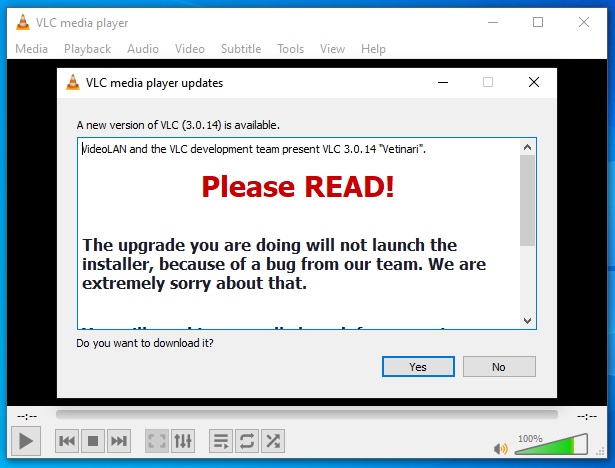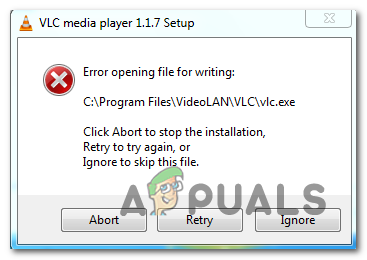
- #UPDATE VLC MEDIA PLAYER HOW TO#
- #UPDATE VLC MEDIA PLAYER PROFESSIONAL#
- #UPDATE VLC MEDIA PLAYER FREE#
First, name both video and subtitle file in the exact same way (it’s ok for them to have different extensions). To automatically open a sidecar captions file in VLC Media Player, you just need to follow two simple conventions. That’s it – you’re all set! Method 2: Automatically Open a Sidecar Captions File in VLC Media Player Once you’ve selected the folder in which you want to save your file, you will be able to save the file. Choose DVB Subtitle, then check the box next to Overlay subtitles on the video.Ĭlick on Apply, next on Save File, then on Browse. There are only two options available: DVB Subtitle, and T.140. A new dialog box will open, allowing you to choose a subtitle file format. Click on Customize to select the additional subtitle options. Then, in the Choose profile section you can select your desired profile. Add the subtitle file by clicking on Open Media. To encode subtitles in VLC on Mac, go to the File tab, then select Convert and Stream:Ī dialog box will open, indicating the selected video file. However, as this is a media player and not an editing tool, its encoding options are limited.

There is also an option to add your subtitle file to your video directly in VLC. You can now add as many subtitle files as you want – also in multiple languages. Expand the Tracks drop-down menu and select Add External SRT. On Mac, open the video in Handbrake, then go to the Subtitles tab.
#UPDATE VLC MEDIA PLAYER PROFESSIONAL#
To do so, order a professional caption file from Rev and download it in the SRT file format.
#UPDATE VLC MEDIA PLAYER FREE#
You can also encode the SRT file with Handbrake, a free open-source video transcoder. This way, they will automatically be enabled on any player, including VLC. To permanently add subtitles to a video, you can use a service like Rev, who will send you a fully captioned video with the captions permanently hardcoded. This is an updated version of a post that was originally published on May 21, 2018.Now that you have your caption file here are a few methods for adding your caption or subtitle file to VLC: Method 1: Embed Captions into Your Videos Part 5: Connecting VLC Media Player Using RTP to AWS Media Services in the Cloud (this post) Part 4: Connecting FFmpeg Using RTMP to AWS Media Services in the Cloud Part 3: Connecting FFmpeg Using RTP to AWS Media Services in the Cloud Part 2: Connecting OBS Studio to AWS Media Services in the Cloud Part 1: Connecting AWS Elemental Live On-Premises to AWS Media Services in the Cloud From a single video input, AWS Elemental MediaPackage creates video streams formatted to play on connected TVs, mobile phones, computers, tablets, and game consoles. It lets you create high-quality video streams for delivery to broadcast televisions and internet-connected multiscreen devices, like connected TVs, tablets, smartphones, and set-top boxes.ĪWS Elemental MediaPackage reliably prepares and protects your video for delivery over the Internet. About AWS Media ServicesĪWS Elemental MediaLive is a broadcast-grade live video processing service. Finally, to use this workflow in production, we highly recommended you use the AWS Elemental MediaPackage endpoint as an origin for a CDN such as Amazon CloudFront. You must also have all of the required information for your particular source, and have an AWS account to access AWS Elemental MediaLive and AWS Elemental MediaPackage services. In order to use this guide, you must download, install, and have some experience configuring VLC media player.

#UPDATE VLC MEDIA PLAYER HOW TO#
In this example, step-by-step instructions show you how to set up a stream using VLC media player as an RTP (Real-Time Transport Protocol) contribution encoder, and configure AWS Media Services for video processing and packaging in the cloud. Create a channel using VLC media player with RTP and AWS Media Services In order to stream a live channel or event, video signals from a camera or other source must be encoded and then sent to the cloud for further processing, packaging, and delivery.

AWS Media Services enable you to deliver highly scalable over-the-top (OTT) video experiences to customers. In this final installment of a five-part blog series, you are learning how to configure and connect various encoders to AWS Media Services.


 0 kommentar(er)
0 kommentar(er)
